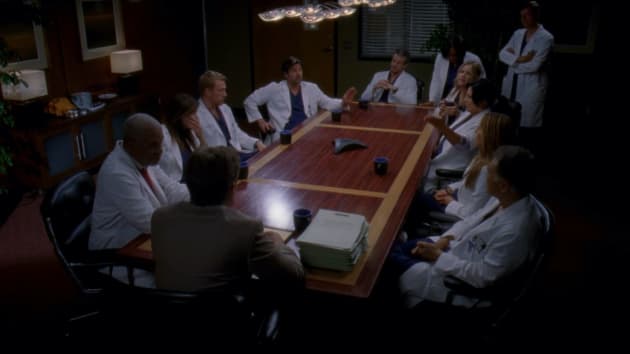Rereading our favorite books is such a comforting practice, but this month, we’re celebrating the special occasion when you get to reconsider a book that you merely appreciated in the first go-around. With some time and a new perspective, a second reading can lead to love.
Interior Chinatown
Experimental or unusual literary structures can be pretty polarizing; either you’re up for a novel told in Slack messages (Several People Are Typing) or as an interview transcript (Daisy Jones & The Six and The Final Revival of Opal & Nev), or you’re just not. But here’s a well-known secret: Sometimes, the great equalizer is audiobooks. Charles Yu’s satirical masterpiece Interior Chinatown is structured partially like a TV script, which is intriguing in print but, perhaps unsurprisingly, makes for the best audiobook I’ve ever listened to. Narrator Joel de la Fuente balances caustic humor with the painful reality of Hollywood racism as he gives voice to Willis Wu, a Taiwanese American actor who dreams of ascending beyond the role of “Generic Asian Man” and achieving the much-coveted role of “Kung Fu Guy.” Willis’ internal monologue alternates with scenes from the crime show “Black and White,” about a white detective and her Black partner, culminating in a brilliant indictment of pop culture stereotypes. Genuinely satisfying satire is rare, but when it’s good, it’s really, really good.
—Cat, Deputy Editor
Aristotle and Dante Discover the Secrets of the Universe
Rereading a book can lead to a discovery of something new about that book. Other times, to revisit something you read in another part of your life is like stepping into your own past and witnessing all the ways you’ve changed. When I first read Aristotle and Dante Discover the Secrets of the Universe in 2012, I was in my mid-20s and finishing my library science degree. I hadn’t really been in love yet. I was still, in many ways, not yet grown. Late last year, as I once again picked up this award-winning YA novel, I was struck by how removed I felt from Ari’s earnest adolescent musings. The paradox of children’s and YA literature is that it’s created by and introduced to young readers by adults. Somehow, it seems I’ve become one of those adults, but the simple, stunning beauty of Benjamin Alire Sáenz’s prose still makes this raw, heartfelt story of teen boyhood transcend the boundaries of age or time.
—Stephanie, Associate Editor
Northanger Abbey
Northanger Abbey can seem like the silly kid sister of Jane Austen’s other novels. As a teenager, when I first read the story of gothic novel-obsessed Catherine Morland, I thought it was frivolous fluff and nothing more. It wasn’t until I reread the novel in college, armed with a much richer understanding of the gothic and what a pop culture juggernaut the genre was during the Regency, that I was able to understand how funny it was; imagine someone approaching their life as if it were a twisty thriller a la Gone Girl. But beyond its success as a culturally specific rom-com, Northanger Abbey should be mentioned in the same breath as early meta narratives like Don Quixote. Austen tracks Catherine’s growing maturity with enormous fondness: Her leaps of logic may be outrageous, but her warped impressions of the people around her are often shockingly astute. It’s a hilarious coming-of-age story that’s also a meditation on how fiction can both blind and guide us. (Also, kind but sassy Henry Tilney is one of Austen’s best heroes, full stop.)
—Savanna, Associate Editor
Hiroshima
I first read Hiroshima in my high school history class. Personally, as an 18-year-old student at an Alabama public school, I still had a ways to go in the appreciation of great books—even one so groundbreaking as John Hersey’s 1946 account of six individuals who survived the atomic bomb that America dropped on Hiroshima, Japan. Luckily, I got the chance to revisit it in my master’s program, when I was better equipped to savor Hersey’s precise reporting and vivid, compassionate writing. (One description of a man who jumped into a river after the bomb exploded still haunts me.) Originally published in The New Yorker, this slim book packs a narrative and historical punch. Chapters alternate among the six subjects’ experiences, beginning with the morning of the bomb and continuing through the following year. (An additional chapter was added later, revisiting the six survivors after 40 years.) What emerges is a breathtakingly intimate portrait of atomic warfare’s inhumanity, especially the way it fuses suffering to survival.
—Christy, Associate Editor
As a college freshman in March 2020, I found myself back at home after only one day on campus following spring break, and I turned to audiobooks to occupy myself. As I listened to Sally Rooney’s second novel, narrated by Aoife McMahon, I enjoyed hearing the characters’ Irish accents and piecing together their lives between time jumps. Still, the characters’ actions didn’t make sense to me at many critical points, and finishing the book left me with a funny feeling. I didn’t dislike it, but I felt like I was missing an essential component of what made it special, even after a conversation with the friend who’d originally recommended it. My recent second listen revealed how naive my initial evaluation was. The subsequent years of my college experience haven’t been like Marianne’s and Connell’s, but I now viscerally relate to their feelings of being lost in emerging adulthood. After updating my Goodreads rating to five stars, I called that same friend with my new revelations.
—Jessie, Editorial Intern




